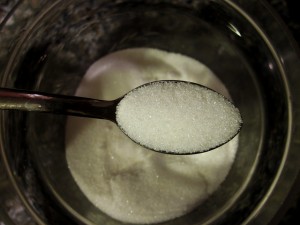World Health Organization Suggests Lowering Sugar Intake
 Do you know how much sugar you eat and drink every day? You may be getting a lot more than you think. Sugar is often added to sauces, dressings and soups, in addition to baked goods, candies, sodas, ice cream and alcoholic drinks.
Do you know how much sugar you eat and drink every day? You may be getting a lot more than you think. Sugar is often added to sauces, dressings and soups, in addition to baked goods, candies, sodas, ice cream and alcoholic drinks.
According to the World Health Organization’s new nutrition guidelines, you should have no more than 12 teaspoons of added sugar each day to avoid obesity and tooth decay. On average, the researchers at the WHO say that you should not get more than 10% of your daily calories from added sugar. For most Americans and Europeans, this means slashing sugar intake by about two thirds.
In a 2,000 calorie meal plan, you should aim for less than 200 calories from added sugar. However, the experts say that sugars from whole, unprocessed foods don’t count. These foods include:
- Milk
- Fruits (whole, not juice)
- Vegetables
- Starches like potatoes
- Whole grains
When making changes to your meal plan, however, the researchers warn that going too low may not be best for your health. In an earlier version of the new guidelines, the WHO thought about making the target 5% instead of 10%. But, they said, there is no good evidence to show that eating this amount sugar is better for you.
If you’re ready to take the WHO’s advice and lower your risk for serious metabolic illnesses, try a few of these steps:
- Avoid sugary drinks like soda, energy drinks, fruit juice and smoothies
- Save desserts for once or twice a week
- Make your own pasta sauce and salad dressings
- Eat more vegetables and whole grains at each of your meals
- Talk to a dietitian about creating a personalized, low-sugar meal plan
- Get 30 minutes of cardio or strength training exercise every day

